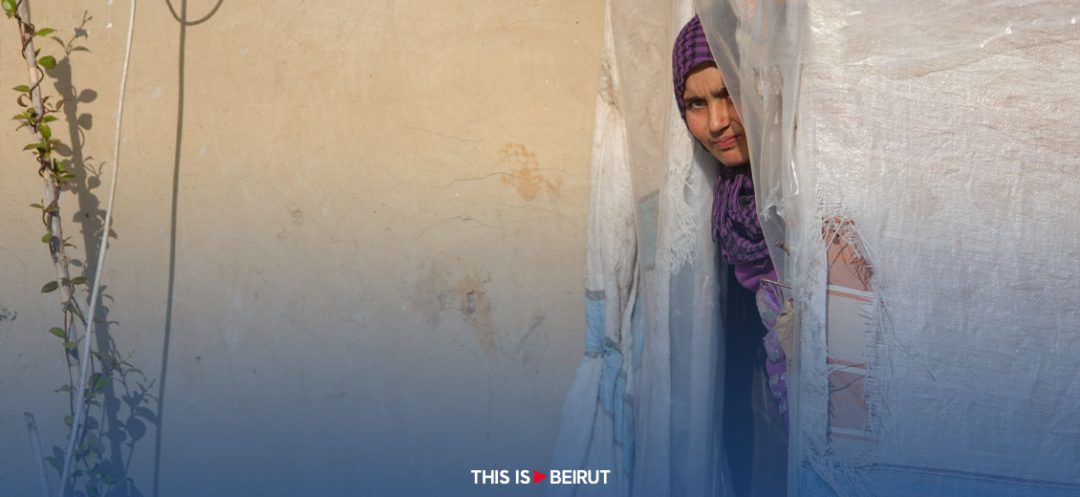
Lebanon is the "biggest contributor" in the issue of illegal Syrian migrants settled within its borders. Since the 2011 onset of the Syrian war, the country has shouldered a significant burden: the cost of hosting this community is estimated to be over $55 billion.
Amid the multidimensional crisis that unfolded in 2019, Lebanon is buckling under the enormous burden of the massive presence of Syrians on its soil, estimated by the General Security at 2,100,000 until 2022.
Since then, migratory flows have intensified, but Lebanese authorities have stopped registering the refugees, a decision they have yet to justify. Consequently, Lebanon has experienced record population density, reaching 600 inhabitants per square kilometer, increasing pressure on the roads infrastructure, reaching 50% in certain regions. The estimated additional maintenance cost from 2015 to 2022 stands at $1.554 billion.
According to data from the Lebanese Ministry of Social Affairs, as reported by This is Beirut, the international community's assistance to Lebanon for hosting Syrian migrants has amounted to a whopping $12 billion since 2011. This figure underscores the lack of seriousness with which the international community addresses such a critical issue.
During his intervention at the video conference convened in Brussels on March 31, 2021, former Prime Minister Hassan Diab had previously estimated the cost of the illegal Syrian presence on the national territory from 2011 to 2018 at $46.5 billion.
Three thousand Syrian workers
What's notable is that among the Syrian migrant community, only 3,000 registered workers were accounted for by General Security with the Ministry of Labor by the end of 2022. It's worth mentioning that Lebanon has been dealing with an unemployment rate of around 37% since 2019. Moreover, in 2024, taxes and tariffs were increased by an average of 120% to bolster the depleted treasury and tackle a 98% devaluation of the Lebanese pound.
Lebanese subsidies for Syrians
Data from the Ministry of Social Affairs reveals that losses on the electrical grid, due to the needs of Syrian migrants, amounted to $23,192,640,000 from 2014 to 2020. What's most unfair in regards to the energy sector is that the Lebanese government was "purchasing" electricity from Syria to cover Lebanon's energy requirements. However, in practice, this "purchase" primarily served to meet the energy needs of both Lebanese citizens and the two million plus displaced Syrians, migrants and refugees residing in Lebanon.
In this context, it should be highlighted that Syrian migrants, like Lebanese citizens, have fully benefited from the Lebanese state's subsidy of electricity since 1994, when the price of a barrel of fuel was set at $22.
Water sector
Meanwhile, the direct damages suffered by the hydraulic sector due to the Syrian presence in Lebanon would amount to nearly $1,633,200,000 from 2015 to 2022. These damages break down as follows:
The additional cost borne by the Treasury due to the increased demand on the drinkable water network and sewage system would amount to $144,000,000.
The yearly cost of the quantity of water used by illegal Syrian migrants stands at roughly $744,600,000.
The expense of wastewater treatment resulting from the water usage by displaced individuals has surged to $744,600,000.
Solid waste
The environmental damages incurred from 2015 to 2022 (8 years) would amount to approximately $879,000,000. These damages are distributed as follows:
The Syrian migrant community generates 1,500 tons of solid waste per day, with an average treatment cost of $150 per ton, totaling $657,000,000 over eight years.
The repercussions of pollution on the environment is estimated at $29,600,000.
The impact on environmental degradation would amount to $192,400,000.
Health and education
Regarding healthcare, the capacity for hospitalization in public hospitals has noticeably decreased. The estimated impact of illegal Syrian migrants on the healthcare infrastructure in the country is approximately $611,112,000.
Education wise, the impact of Syrian migration is estimated at a staggering $1.5 billion.
Read more




Comments